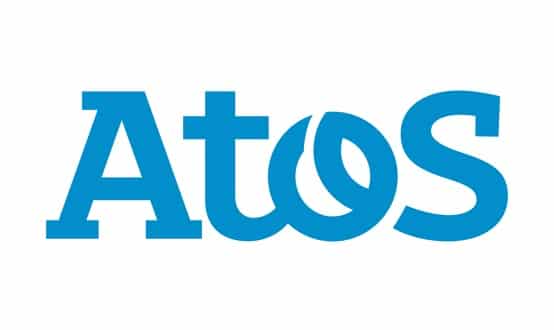Do more, with less
- 21 January 2010
 As ever more dire warnings about the impact of the credit crunch on the NHS were sounded last year, the Department of Health developed a consistent message for managers.
As ever more dire warnings about the impact of the credit crunch on the NHS were sounded last year, the Department of Health developed a consistent message for managers.
There was to be no return to the “slash and burn” of crises past, when waiting lists were allowed to lengthen and hospitals to become grubbier. Instead, savings were to be made by improving quality, innovation and productivity.
Incoming health secretary Andy Burnham, who worked on the Our Health, Our Care, Our Say: a new direction for community services white paper as a junior minister, said he wanted “to add another p – prevention” – and the QIPP agenda was born.
The message that the NHS faces an unprecedentedly difficult future but QIPP is the way to prepare for it is shot through three documents that the DH published in the run-up to Christmas.
It appears in the NHS 2010-2015: from good to great. preventative, people-centred, productive, which sets out a “five year vision” for the health service; in the operating framework. for the NHS in England 2010/11, which is meant to “operationalise” the first year of the vision; and finally in the informatics planning. 2010/11, which attempts to align informatics with the over-arching strategy.
Show me the money:
In the foreword to the operating framework, NHS chief executive David Nicholson says the coming financial year will be “pivotal” for the NHS, since it will be its last year of significant funding growth.
Primary care trusts will see their budgets increased by an average of 5.5% in 2010-11. After that, Chancellor Alistair Darling has promised to increase “frontline” NHS spending in line with inflation in 2011-12 and 2012-13.
However, “frontline” seems to cover just 95% of NHS expenditure. And even if it covered 100%, a rise in line with inflation would leave the health service struggling to cope with the rise in demand that will be caused by an aging population and the growing burden of chronic disease.
To cover the shortfall, Nicholson has predicted that the NHS will need to identify £15-£20 billion of efficiency savings by the end of 2013-14.
The operating framework says strategic health authorities and primary care trusts should make a start in the coming financial year by aiming to finish it with an aggregate surplus of £1 billion, while holding back 2% of their resources for non-recurring spending.
At the same time, it says PCTs will be expected to pick up £500m of DH spending, to help the DH find the £2.3 billion that it is expected to contribute to the £5 billion of government efficiency savings announced in the Pre-Budget Report.
Inevitably, this will impact on providers. The operating framework says the NHS tariff – or the money that hospitals are paid for carrying out operations and other treatments – will be frozen this year, while additional accident and emergency work will be paid at only 30% of the tariff price.
In future years, the tariff will become a maximum rather than a set price, and it will be applied to many more providers, including community and mental health services. Providers will also see more of their income tied to delivering best practice, complying with quality initiatives and delivering patient satisfaction.
Yet NHS organisations will be expected to make all these savings while becoming leaner and meaner themselves. The operating framework says it wants to see management and administrative support costs cut by 30% by 2013-14.
The Smarter Government report published by Prime Minister Gordon Brown at the start of December set out “benchmarks” for back-office costs that NHS organisations will be expected to meet, for example by using shared services and procurement hubs. It also set out targets for reducing consultancy spend by 50%, communications spend by 25% and IT project spend by 10%.
Uncharted waters
Responding to the operating framework, NHS Confederation chief executive Steve Barnett said it was “a further reminder of the scale of the efficiency savings the NHS needs to make if it is to survive the biggest financial challenge it has faced in a generation.”
However, Anna Dixon, director of policy at the King’s Fund, said it was unlikely that its tariff and efficiency measures would be enough. Indeed, she noted that the move to maximum pricing was likely to drive up the cost of planning and purchasing care “as PCTs return to bargaining with hospitals over prices.”
To be fair, the DH is under no illusion that the financial agenda will be enough. Good to Great says that while it should be possible to find £1.8 billion of savings from back office functions and procurement, more money will be freed up by improving staff productivity and service transformation.
It argues that £3.5 billion could be found from making all NHS organisations as productive as the best and £2.7 billion from “enabling people to better manage their own conditions, treating them closer to their own homes and avoiding unnecessary hospital visits.”
This, it admits, will require a considerable amount of re-organisation, with “hospital care re-structured to concentrate on providing care for the sickest patients”, a return to the Our Health, Our Care, Our Say agenda of more care in community settings, more support for people with long-term conditions, and more lifestyle support to stop people needing healthcare in the first place.
It will also mean better defined patient pathways, with fewer variations in cost and quality. The operating framework says decisions will need to be made as early as the coming financial year on the future shape of provider services. As a first step, it says the future of PCT-provider services must be made by March.
Good to financially challenged
Another King’s Fund researcher, Ruth Thorlby, noted that while Good to Great picks up many of the themes of Lord Darzi’s Next Stage Review of the NHS, it also shows how much has changed since its final report, High Quality Care for All, came out in 2008.
“This publication is designed to reconcile the earlier visions for NHS improvement with the new realities of financial slowdown,” she said. “It is also designed to address the government’s underlying fear that patient care will suffer as a result of the financial challenge, as has happened in the past.”
Unfortunately, it is not clear that the vision or the work outlined in the DH’s documents will be strong enough to prevent a rush to mergers and cuts.
Thorlby also noted that “most of the document refers to work already announced or in progress”, while the right-wing Civitas think-tank went further, describing the command paper as “the usual mish-mash of government rhetoric – loud on promise, short on reality.”
Enter informatics
The DH may be hoping that informatics is one of the drivers that will make things different this time. Both Good to Great and the operating framework give a new prominence to informatics as a way to “underpin the delivery of strategic business and service objectives.”
Indeed, they promise that a “national strategy” will be developed for this to go alongside the new direction for the National Programme for IT in the NHS that was agreed last autumn.
The informatics planning. 2010/11 says this will “move from a ‘replace all’ to a ‘connect all’ philosophy”, which it defines as “connecting citizens with information, connecting patients with clinicians, connecting clinicians with each other, and connecting clinicians with information.”
In the meantime, it says PCTs should be drawing up plans to make use of technology to deliver new models of care and better patient experience.
Specifically, it says the DH will be looking for more assistive care pilots for people living with long term conditions, more use of mobile technology in the community, and more services to collect feedback from patients on their experiences (including text messaging).
NHS IT departments are not, however, immune from the demand to do more with less. The informatics planning says NHS organisations should be looking for “the most effective and efficient models for the delivery of informatics and technology services” and that these might include shared health informatics services.
It says IT services should be looking to consolidate their infrastructures by making use of the NHS Infrastructure Maturity Model (NIMM) and to save money by making use of national services, products and agreements.
In particular, it wants to see more use being made of NHS Evidence and the NHS Information Centre, Choose and Book being used for all referrals, trusts moving to NHSmail unless there is a compelling business case for them to invest in their own email systems, and more use being made of enterprise wide agreements.
But don’t forget the general election
In his forward to the operating framework, Nicholson said the coming financial year is “not a time for rash, short term decisions” but that it must still be “a year for action.” Unfortunately, it is also a year in which there will be a general election.
In a briefing issued this week, the NHS Confederation noted that this will focus political and public attention on the health service while adding a “layer of uncertainty” to funding, since the Conservatives have promised an emergency budget if they take power.
It is, the briefing concluded, “a particularly challenging environment” in which to be working. It’s also one in which NHS informatics is expected to play an increasingly strategic part.
Links: NHS 2010-11: from good to great. preventative, people-centred, productive.
the operating framework. for the NHS in England 2010/11.
informatics planning. 2010/11.




